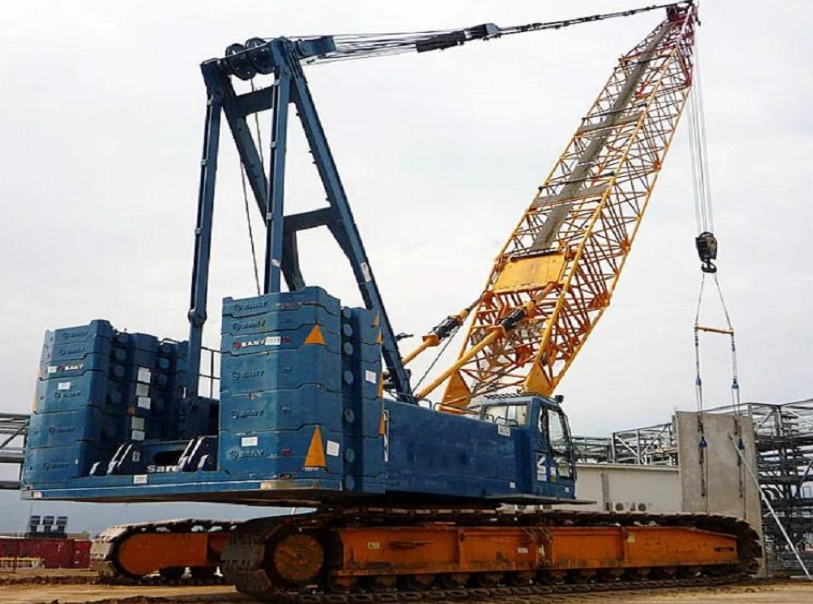Mobile crane safety starts long before lifting begins. Crews must inspect the equipment, assess the ground, verify load details, and confirm team readiness. These steps help prevent accidents and ensure stable, controlled operations. By following a structured safety process, contractors reduce risks and protect workers on site. A clear checklist also supports consistent performance throughout every lifting task.
Inspecting the Crane’s Mechanical Condition
Checking Engine, Hydraulics, and Control Systems
Inspect the crane’s engine, hydraulic hoses, and control panels to confirm they operate smoothly without leaks or warning signs. Test all functions, including steering, lifting controls, and throttle response. Look for unusual noises or slow reactions. Hydraulics must hold pressure without drops. A thorough mechanical review helps ensure the crane can perform safely during every lift and prevents unexpected equipment failure.
Verifying Boom, Wire Ropes, and Structural Components
Examine the boom for cracks, dents, or wear. Inspect wire ropes for fraying, corrosion, or strand separation. Structural components like pins, sheaves, and welds must remain tight and free of damage. These parts handle heavy loads, so any weakness can create severe hazards. A complete visual and hands-on inspection ensures the crane’s lifting systems remain strong and ready for safe operation.
Ensuring Brakes, Tires, and Outriggers Are Fully Functional
Check that the service brakes and parking brakes engage correctly and hold the crane steady. Inspect tires for proper pressure, tread depth, and visible damage. Outriggers must extend fully and lock securely before lifting begins. Stable ground contact is essential to prevent tipping. Confirming that these systems work well helps maintain safe positioning and ensures the crane stays balanced throughout the job.
Evaluating Ground and Site Conditions
Confirming Soil Stability and Load-Bearing Capacity
Assess whether the soil can support the crane’s weight, including loaded and unloaded conditions. Soft or unstable ground may require mats, pads, or engineered support. Test for signs of shifting or compression before deploying outriggers. Understanding load-bearing capacity helps prevent ground failure and improves overall lifting safety. Proper evaluation ensures the crane remains stable under pressure during all lift stages.
Identifying Slopes, Obstacles, and Restricted Zones
Survey the site for slopes, uneven terrain, overhead lines, and nearby structures. Mark restricted areas to prevent workers from entering unsafe zones. Identify obstacles that could affect boom movement or crane travel. Knowing these risks ahead of time helps operators plan safe paths and avoid collisions. Clear mapping of hazards ensures smoother operations and reduces unnecessary disruptions during lifting tasks.
Assessing Weather Conditions and Visibility Levels
Weather directly affects crane performance, especially during wind, rain, or low visibility. Measure wind speeds to ensure they stay within safe limits for lifting. Fog, heavy rain, or harsh sunlight can reduce visibility, making it harder for operators to see signals and surroundings. Monitoring weather helps teams decide when to pause operations and prevents accidents that occur under unsafe conditions.

Reviewing Load Requirements and Lifting Plans
Confirming Load Weight and Rigging Arrangements
Verify the actual weight of the load and ensure rigging matches the lifting method. Select slings, shackles, and hooks based on rated capacity. Check rigging angles and balance to prevent shifting during movement. Clear labeling and documentation help avoid mistakes. Proper preparation ensures the crane handles the load safely from start to finish and reduces the chance of unexpected load instability.
Verifying Rated Capacity and Lift Radius
Match the lift radius and planned boom length with the crane’s load chart. As the radius increases, capacity decreases, so accurate measurements are essential. Confirm the crane can safely handle the load at full extension. Monitoring these factors protects operators and prevents overloading. Correct capacity planning also improves lifting precision and reduces the risk of structural failure under heavy loads.
Preparing a Clear, Step-by-Step Lift Plan
A detailed lift plan guides the entire team through each step of the process. Include load weight, rigging setup, lift path, communication signals, and emergency actions. Review the plan with operators, riggers, and spotters to ensure everyone understands their role. A well-prepared plan reduces confusion, avoids errors, and creates a coordinated approach that keeps the lift controlled and safe.
Ensuring Personnel Readiness and Communication
Verifying Operator Certification and Experience
Confirm that the crane operator holds the required certifications and has experience with the specific crane model. Skilled operators understand load charts, controls, and safety protocols. Their judgment helps prevent accidents during complex lifts. Checking qualifications ensures the operator can manage unexpected challenges and maintain steady control of the crane in demanding or fast-changing site conditions.
Coordinating Signals and Communication Protocols
Establish clear communication methods before lifting begins. Assign a designated signal person to direct the operator using standard hand signals or radios. Ensure all team members understand the same commands to avoid confusion. Consistent communication supports precise movements and prevents dangerous misinterpretations. Good coordination keeps everyone aligned and improves overall safety during each stage of the lift.
Reviewing Emergency Procedures With the Team
Discuss emergency steps such as load lowering, equipment shutdown, and evacuation routes. Make sure every worker knows how to respond if a signal is missed, the crane becomes unstable, or equipment fails. Reviewing these procedures reduces panic and supports quick action during unexpected events. A well-prepared team can protect one another and react correctly under pressure.
Conclusion
Performing thorough safety checks before deploying a mobile crane crane protects workers, equipment, and the job site. Inspecting mechanical systems, reviewing ground conditions, confirming load data, and preparing the crew all play critical roles. These steps create a controlled lifting environment and reduce risk. With a clear and consistent safety process, teams can complete lifts confidently and maintain strong project performance.
